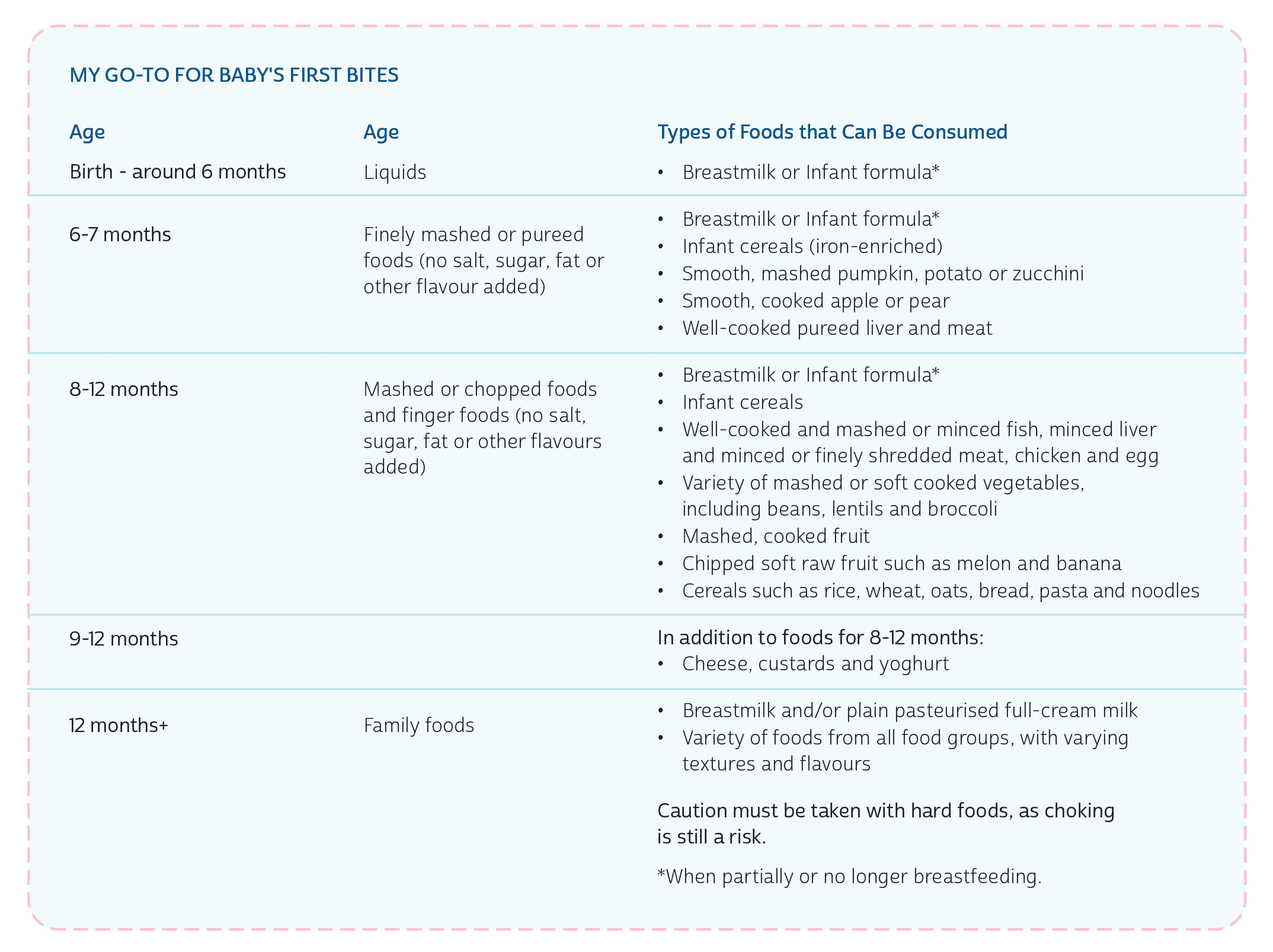Around the age of six months your baby will start to need more nutrients than breastmilk or formula can provide. You may start to notice your baby reaching for food and opening and closing their mouth when you’re eating, or when you offer them a spoon. These are signs your baby is ready to discover a whole new world of solid foods. Other signs include your baby’s ability to sit upright with limited support and demonstrating good head and neck control.
When you start to offer new foods to your baby, things will get a little messy. From investigating new food with their fingers, to throwing it on the floor when they’re no longer interested and of course the change in their nappies. But the delighted – or disgusted, expression on their faces makes it all worth it.
Once you have identified your baby’s food interest and they’re older than four months, see the table of foods recommended by the Australian Government Department of Health at www1.health.gov.au to provide key nutrition.

When your baby is relaxed, usually after their breastmilk or formula, start with only a couple of spoonfuls once or twice a day. Try a single food for several before moving onto something new in case any allergies arise. Although the food may seem bland to you, each food is an entirely new experience to baby. It is important to expose them to a range of healthy food with different flavours and textures to establish a good foundation for future eating.
Foods to Avoid for Children Under 12 Months
- Unpasteurised foods
- Smoked and cured meats
- Fish with high levels of mercury
- Refined grains
- Sugary foods including honey
- Unpasteurised cow’s milk
- Fruit juice
Always supervise your baby during feeding time to ensure their safety. If your baby has developed a rash, contact your GP as they may have a food allergy. Call 000 immediately if your baby is vomiting, has diarrhoea, face swelling or difficulty breathing after eating.
For Guidelines on Infant Feeding and Allergy Prevention from The Australasian Society of Clinical Immunology and Allergy visit www.allergy.org.au




